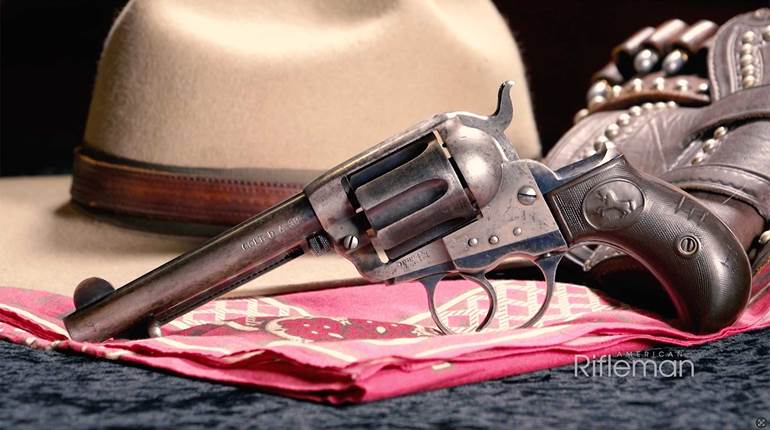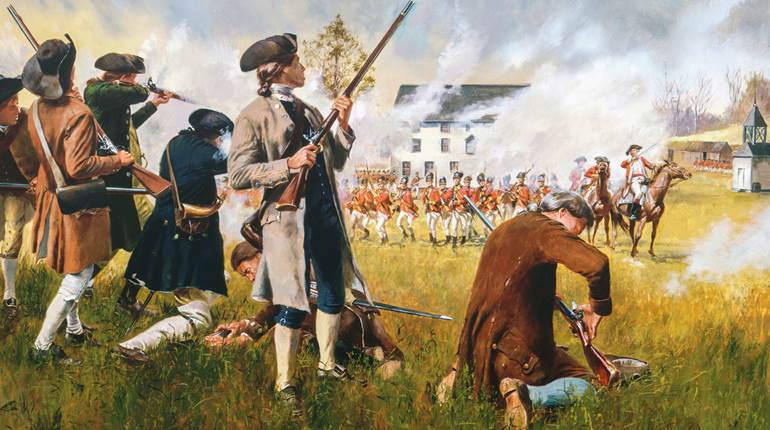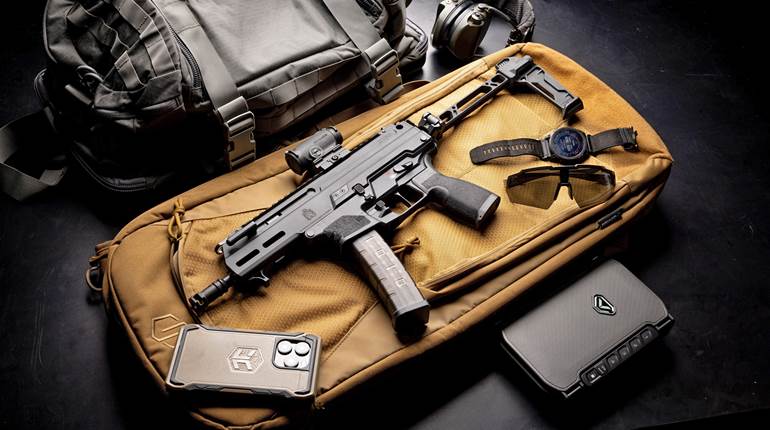
4/23/2013
Smith & Wesson’s .44 Double Action First Model revolver seems to be one of that company’s more neglected designs. It tends to be overlooked as it came between the vaunted No. 3 SA and various Hand Ejector Models. The primary chambering was .44 Russian, of which 53,590 were made between 1881 and 1913. Some 15,340 “Frontier” models were also produced, as was a .38-40 Win. Those guns were numbered in individual ranges and are basically considered separate models. All frames were made prior to 1899. Some rare chamberings, such as .38 S&W, .38 Colt and .38-44 Gallery, may be encountered, but they are extremely rare. The First Models continued to be listed in catalogs for a number of years after their production ceased to clear out old stock.
Following the lines of smaller and slightly earlier S&W .32 and .38 top-breaks, the First Model DA incorporated an excellent self-cocking mechanism that was as good as many British and Continental designs. It was also head and shoulders above Colt’s more popular Model 1877 “Lightning” and Model 1878 “Frontier” models, a happenstance that must have been more than frustrating to the folks at Smith.
Smith & Wesson’s First Model DA incorporated the company’s familiar curved grip frame, flanked by either hard rubber or checkered walnut stock panels. The revolver was available in blue and nickel-plated finishes, and barrels were 4, 5, 6, 6½ and 8 inches (rare) in length, with 5 inches being the most common.
First Model DA .44s employed the usual S&W top-break ejection system. The revolver could be fired double- or single-action, though it had no safety position, and the hammer did not rebound after the trigger was released, resulting in a potentially dangerous setup if the gun were dropped.
Standard sights on the First Model DA .44 were similar to those on the No. 3, a rounded, fixed-blade front and miniscule notch rear, milled out of the fore-part of the frame latch. Some guns were fitted with target sights, but they are not the norm and bring premium prices when encountered.
Even though the .44 Double Action was not one of S&W’s most popular products, it still had a following. In fact, Texas gunfighter and all-around bad guy John Wesley Hardin was carrying a .44 S&W Frontier when he was killed in the Acme Saloon by Constable John Selman in El Paso in 1895. Ironically, when Selman was killed a year later by George Scarborough, also in El Paso, he was toting a .44 New Model.
The .44 Russian First Model DA shown here is in NRA Antique Excellent condition, mechanically perfect with about 85 percent of its original nickel-plated finish. In such condition, the revolver is worth a good, solid $1,200.
Gun: Smith & Wesson .44 Double Action, First Model
Caliber: .44 Russian
Serial Number: 1253
Condition: NRA Antique Excellent
Manufactured: 1881-82
Value: $1,200





































